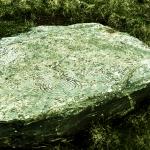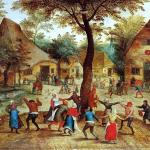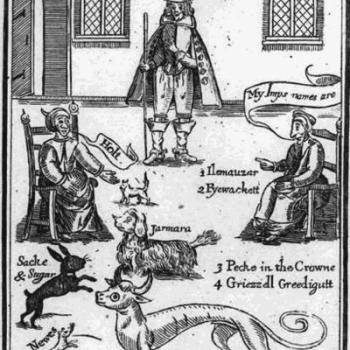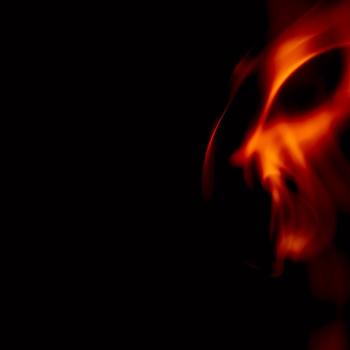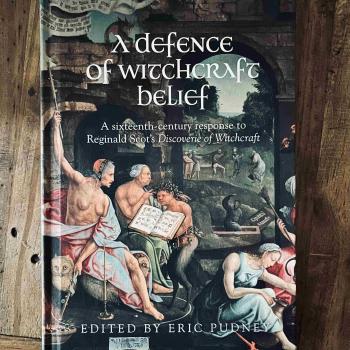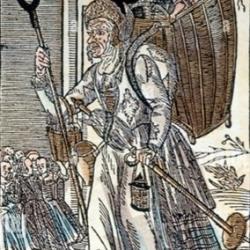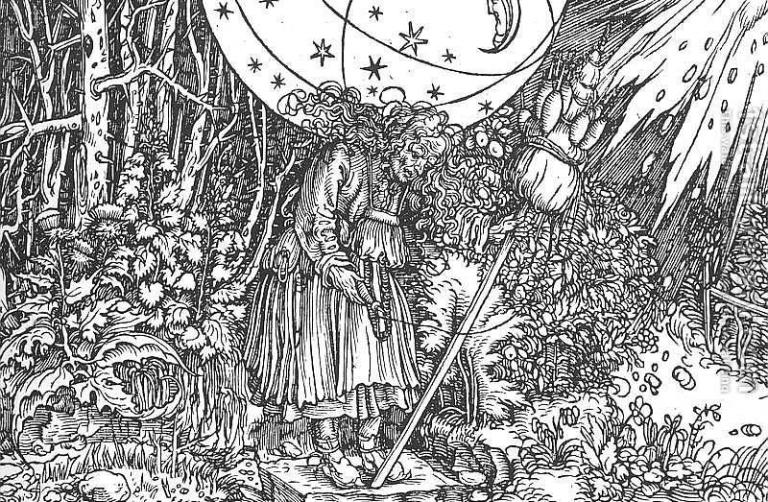
Robert Cochrane has become well known in association with the 1734 Tradition of Witchcraft following his brief correspondence with Joe Wilson. Wilson founded the tradition following this flurry of letter writing under the guidance of his mentor ‘Sean’, as well as influence through Ruth Wynn Owen of the hereditary tradition Y Plant Bran.
The philosophy of the number itself has spawned much speculation over the years as the letters to Wilson have come to the attention of seekers. There is a vast amount to be learnt form the combination of 1734 and it provides a complete shorthand for the compass and philosophy of Traditional Witchcraft itself, offering the diligent student the opportunity to explore these depths and wonder further.
However, there has been reference to a particular artefact that was presented as an heirloom of Cochrane’s that erroneously made its way into the public sphere and, henceforth, has been used to cast the shadow of doubt over the philosophy of 1734, as well as Cochrane’s reliability in a broader sense.
Doreen Valiente & The Rebirth of Witchcraft
In her seminal and full summation of modern witchcraft, The Rebirth of Witchcraft, Doreen Valiente is the main source for much of the doubt that arises over Cochrane’s works and the artefact is raised as a point of question. This 1989 work by the ‘Mother of Modern Witchcraft’ makes mention of a book written by the journalist Justine Glass, with some collaboration with Robert Cochrane. As a member of Cochrane’s group, Valiente was in a unique position to comment. Unfortunately, those who have read into her writings have taken away with them the notion that Cochrane was a fraud. Furthermore, it is asserted that there is a following in the USA which draws from the writings of Cochrane under the philosophy of 1734, leading Valiente into a discussion of the object and book which makes mention of this mysterious artefact. In her opening salvo, Valiente’s language has been interpreted as a cause for doubt over Cochrane’s validity, saying that she is aware of “… some fervent followers in the USA who revere his [Cochrane] memory as a real traditional witch.”(Valiente, 2016). We can readily see in this sentence the implication that, according to the authority which is Doreen Valiente, Cochrane was no such thing. This interpretation has taken root amongst a great deal, perhaps unjustly.
It pays, then, to recall some of the passage which discusses this from The Rebirth of Witchcraft:
…the picture contained in Justine Glass’s book of a copper plate bearing the figures ‘1724’ and allegedly an heirloom handed down in its owner’s family for ‘several hundred years’ has become something of a cult object. I am afraid I have a nasty shock for them. I bought this copper dish for Cochrane in a Brighton antique shop. (Valiente, 2016)
The passage goes on to explain how subsequently Valiente tackled Cochrane over this artefact and her belief that he looked suitably bashful and attempted to explain that the publisher had got the images mixed up, that it was another object to which the story alluded. In the full chapter that proceeds from this, Valiente describes Cochrane and his Clan workings a little, albeit indicating that she had become disillusioned by Cochrane. It is this last assertion, coupled with the story above, which has fuelled the antagonism against 1734 and Cochrane and the belief that he ‘made it all up’. This is a position we wish to now address and, to some extent, remedy.
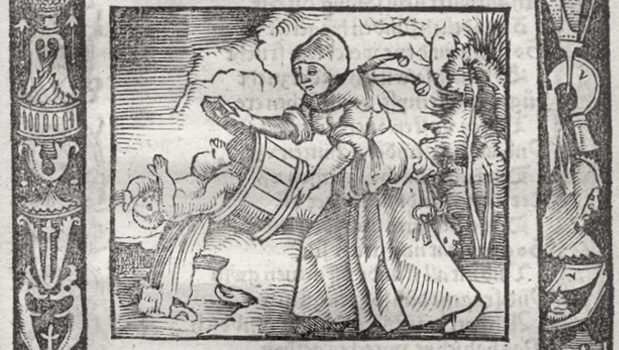
The Hand of Robert Cochrane
Whilst idly browsing the internet, and in a state of my usual and incessant studying of the Robert Cochrane witchcraft work and material, I happened immediately across a blog post by Ulysses Black. In this post, entitled ‘The Hand of Robert Cochrane’, reproduced are pages of a book which show annotations, as well as the title page which contains a dedication to ‘Roy and Jane’, the date of February 7th 1966, and signed by the author, Justine Glass. At the top of the page, the author has written ‘Review copy’. We can discern from this, if it is genuine, that we have here a copy of the book by Justine Glass which Valiente discussed (Valiente, 2016) and which was given to Roy and Jane for review by the author. Furthermore, we can assume that the Roy and Jane addressed is in fact Robert Cochrane and his wife, as Cochrane was a pseudonym.
On his page, Ulysses Black explains that he acquired the copy in 2002 in his capacity as a book dealer, paying it no further regard. There it remained, in a collection, unremarkable as a ‘good condition’ edition of Justine Glass’s Witchcraft, The Sixth Sense and Us, otherwise unremarkable. By his own admission, Black casually flicked through the book some years later and noticed the annotation, as well as the particular vitriolic and personal nature of the notations. Once again, it remained unobserved for a while until Black read Gavin Semple’s A Poisoned Chalice, which explores the circumstances of the death of Cochrane, prompting him to return to the copy of the book in his possession. It would appear, then, that this copy, and the accompanying notes, would belong to the hand of Robert Cochrane.
Having sought verififcation with one who has examples of Cochrane’s handwriting, and comparing to those few that are available to study in the UK, it would appear to this writer that it is, indeed, the writing of Roy Bowers, also known by the pen name Robert Cochrane.
Except for the small number of us who are particularly interested in and pursue a path that draws from the magic surrounding Robert Cochrane, this would be of little interest to the greater pagan community. However, there is a particular aspect that I wished to get clarification upon and I wrote to Black to see if my suspicions could be born out. Rather amicably, Ulysses Black agreed and forwarded an image from the book that I had requested. And there it was, the picture of the copper plate with the annotations that ostensibly are of the pen of Cochrane.
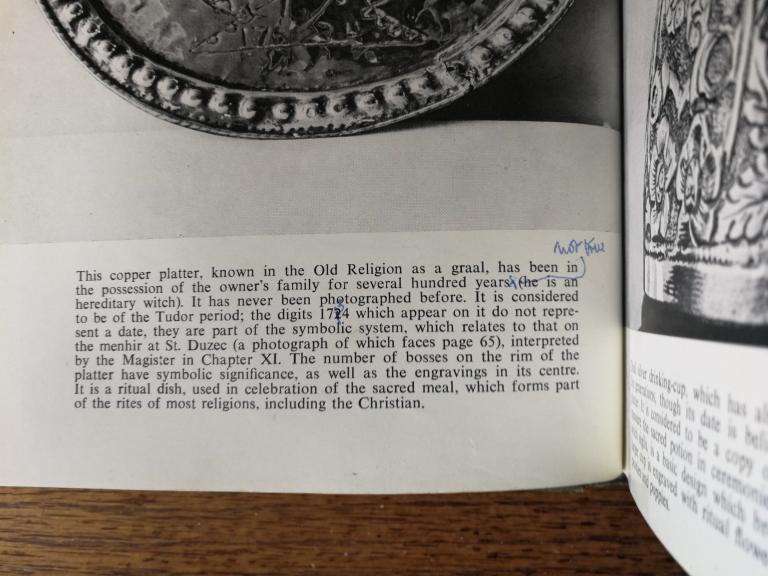
The plate’s caption has some glaring errors, including the spelling of the St Uzec Menhir, which is called here ‘St Duzec’ (Glass, 1965). In the annotations made against the caption, the date has been amended from 1724, with the number 2 crossed out and a 3 in its place. Furthermore, seemingly in contradiction to Valiente’s assertion that Cochrane was trying to pass the plate off as having been an heirloom, the segment which says: “This copper plate, known in the Old Religion as a graal, has been in the possession of the owner’s family for several undred years...”(Glass, 1965) is simply marked and the words “Not true” noted above. This would suggest, if this is indeed Cochrane’s review copy and in his own hand, that Cochrane did not intend for the story which Glass presents to be accepted as factual, nor did he personally and privately acknowledge it as such. This must lead us to believe that there is some margin of error between what occurred and what Valiente recalled and wrote of in her 1989 book. Unfortunately, it was mere months from the dedication of this copy of the book to the tragic demise of Cochrane in June of the same year.
Another tantalising detail is in the mention of the St Uzec Menhir, and the reproduced photograph which faces page 65. Ulysses Black was kind enough to include in the cache of information he forwarded me an image which shows that a plate had been removed from the book. Upon inspection, it is the image that would face page 65, suggesting that the picture of the Menhir had been removed. Rather fascinatingly, in one of his letters to Joe Wilson, Cochrane mentions that he has included a copy of the picture of the St Uzec Menhir, which is the very same image that is missing.
I have enclosed a leaf out of a book which has the photograph of a French Menhir upon it – I helped the woman who wrote this book, and explained something of the menhir to her – but she is a fool, and her book is a shame to read since it is only interested in the sensational, and not in wisdom. (Cochrane and Jones, 2002)
Finally, we can, based upon this, confidently date this letter as some time between February and June 1966; that is, after the receipt of the review copy of Sixth Sense and before the death of Cochrane.
Ultimately, we can draw no definite conclusions from this new revelation to the Cochrane material. However, we can positively assert that, if this is genuinely Robert Cochrane’s copy of Witchcraft: the Sixth Sense and Us that he was certainly aware that there had been some untruth published in the caption of the plate which bears the numbers 1734. In addition, his note that this is an untruth, along with the general disparaging tone of his other notes, as well as his remarks to Joe Wilson, might indicate that he was less than pleased with the suggestion. One could conclude, then, that the duplicity was not, in fact, his own but some misunderstanding or error, perhaps even deliberate sensationalising, of which he was not a party. Indeed, he appears to be quite ill at ease form the general tone of the notes with the association with the falsity.
We do know that the numbers 1734 have quite a sincere and profound meaning and purpose within the tradition of witchcraft that bears its name, as well as those others to which it is related and are heir to Cochrane’s legacy; namely the Clan of Tubal Cain. It is unquestioned that the plate is not an heirloom and that its digits number 1724. However, we now have both Valiente’s assertion that Cochrane purposefully mislead Glass and the implication that he was deceitful, coupled with a simple remark that, in context, would lead us to believe that it was not, in fact, his intention at all. Given that this is his personal copy and note, not meant for public consumption, we can safely say that, assuming this is Cochrane’s handwriting, he met the falsehood with some distaste. In the end, the full answers will remain lost to us and known only by those who were there.
With thanks to Ulysses Black
The Clan of the Entangled Thicket
Bibliography
Cochrane, R. and Jones, E. J. (2002) The Robert Cochrane Letters: An Insight into Modern Traditional Witchcraft. 1st edn. Edited by M. Howard. Capall Bann Publishing.
Glass, J. (1965) Witchcraft, The Sixth Sense and Us. N Spearman.
Valiente, D. (2016) The Rebirth of Witchcraft. 2016 Impre. Robert Hale.


